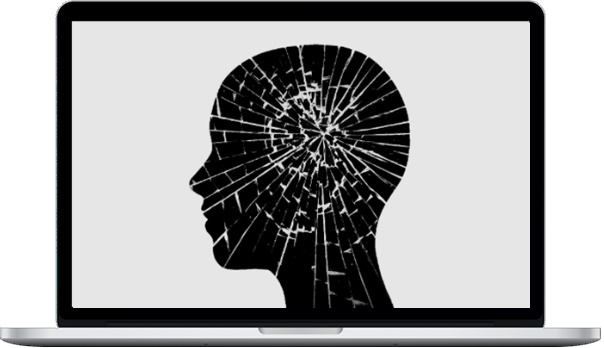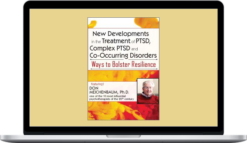NICABM – Helping Clients Undo Patterns of Pleasing and Appeasing
$197.00 $44.00
»Delivery: Within 24hs
Description
NICABM – Helping Clients Undo Patterns of Pleasing and Appeasing
Working with Please & Appease
The Trauma Response That Can Lock Clients in Patterns of Over-Prioritizing Others’ Needs and Tolerating Mistreatment
When a client has a pattern of chronic people-pleasing, they’re often caught in a near lifelong cycle of over-prioritizing others’ needs.
Now on the surface, this can seem like a good thing – it’s selfless, socially acceptable, and more often than not, it gets rewarded.
But here’s the thing – for many clients, pleasing and appeasing is their default way of protecting themselves from rejection, abandonment, or other types of emotional and physical harm. What’s more . . .
Pleasing and appeasing often starts out as a protective response to trauma.
Trauma researchers now recognize please and appease as one of the alternative defense responses to fight-flight-freeze (you might also hear it referred to as the fawn response).
And similar to all trauma responses, it can bring clients a sense of safety in the short term. The problem is, the longer someone engages in pleasing and appeasing, the more damage it can do.
So how do we help clients stuck in a response that compels them to erase their own needs and wants for the sole purpose of pleasing another person, in order to stave off mistreatment?
We thought this issue was so pervasive that we took this question to 21 of the leading experts in the field. We distilled their sharpest insights and strategies to bring you . . .
What You’ll Learn In Helping Clients Undo Patterns of Pleasing and Appeasing
Key Factors That Set Pleasing and Appeasing Apart from All Other Trauma Responses (And That Can Make It So Tricky to Detect)
Christine Padesky, PhD Stephen Porges, PhD Thema Bryant, PhD Shelly Harrell, PhD Pat Ogden, PhD
- One feature of the please and appease response that makes it particularly insidious (and that often reinforces it)
- Why clients might not think that their pleasing and appeasing is all that problematic
- The counterintuitive sign that your client has a habit of pleasing and appeasing
How to Undo Deeply Engrained Patterns of Pleasing and Appeasing
Stephen Porges, PhD Deb Dana, LCSW Rick Hanson, PhD
- The approaches we should AVOID when working with please and appease
- How to take advantage of neuroplasticity to help clients unlearn habits of pleasing and appeasing
- A step-by-step approach to helping clients feel more empowered in saying “yes” and “no” (instead of privileging others’ desires)
Strategies to Help Clients Begin to Unravel Patterns of Pleasing and Appeasing Behavior
Lynn Lyons, LICSW Terry Real, MSW, LICSW
Joan Borysenko, PhD Christine Padesky, PhD
- How to help clients see that their pleasing and appeasing is doing harm (and get them on board with the idea that change is necessary)
- Specific language to help your client unpack how their habits of pleasing and appeasing developed
- Strategies to help your client challenge the underlying beliefs that drive their pleasing and appeasing
Key Factors to Consider When Your Client Is Pleasing and Appeasing in Response to a Present Threat
Lynn Lyons, LICSW Shelly Harrell, PhD Kelly Wilson, PhD
Rick Hanson, PhD Chris Willard, PsyD Ron Siegel, PsyD
- Why pleasing and appeasing is sometimes necessary (and what this might mean for your treatment approach)
- What NOT to say to a client in an abusive relationship (and what to say instead)
- How to navigate a case when a client can’t escape ongoing threat
How Pleasing and Appeasing Can Serve (And Cost) Your Client
Joan Borysenko, PhD Stan Tatkin, PsyD, MFT Stephen Porges, PhD
Thema Bryant, PhD Deany Laliotis, LICSW Christine Padesky, PhD
Shelly Harrell, PhD Chris Willard, PsyD Ron Siegel, PsyD
- How to address 2 common misconceptions about the please and appease response
- The roots of pleasing and appeasing (and how these behaviors can develop in response to trauma)
- 3 specific consequences that can come from chronic pleasing and appeasing
Strategies to Help Clients Shift from Pleasing and Appeasing to Setting Healthy Boundaries
Pat Ogden, PhD Chris Willard, PsyD Thema Bryant, PhD
Rick Hanson, PhD Joan Borysenko, PhD Michael Yapko, PhD
Christine Padesky, PhD Janina Fisher, PhD
- 2 common fears your client might have about setting boundaries (and how to help them get past these hang-ups)
- Using the “power of maybe” to help ease clients into boundary-setting
- Versatile imagery exercises that can help clients maintain boundaries
When Pleasing and Appeasing Overtakes a Client’s Identity (And How to Help Them Reconnect with and Embody Their Values)
Thema Bryant, PhD Christine Padesky, PhD Michael Yapko, PhD
Deany Laliotis, LICSW Shelly Harrell, PhD
Kelly Wilson, PhD Ellyn Bader, PhD
- How to help your client see themselves as more than just a caretaker
- 2 exercises to help clients reconnect with their interests and values
- Strategies to help clients prioritize their values (even when it means upsetting others)
How to Help Clients Differentiate Between Functional and Dysfunctional Pleasing and Appeasing
Terry Real, MSW, LICSW Miguel Gallardo, PsyD
Stan Tatkin, PsyD Christine Padesky, PhD
- Why practitioners shouldn’t assume that pleasing and appeasing is inherently problematic
- Concrete benchmarks to assess whether your client’s pleasing and appeasing is helping or hurting them
- Cultural considerations for working with please and appease
How to Respond If You Notice Your Client (Or Yourself) Pleasing and Appeasing During a Session
Thema Bryant, PhD Deb Dana, LCSW Lynn Lyons, LICSW
Shelly Harrell, PhD Ron Siegel, PsyD Bill O’Hanlon, LMFT
Christine Padesky, PhD Richard Schwartz, PhD Chris Willard, PsyD
- Why a client’s pleasing and appeasing in session might slip under your radar (and how to guard against it)
- How to respond when your client defaults to pleasing and appeasing you in a session
- A quick “self-check” for when you find yourself slipping into please and appease behaviors in a client session
About NICABM
We proudly provide continuing education for practitioners who are dedicated to being the best in their craft. Our goal is to develop programs that connect you with the top experts and the latest strategies in the field, to help you achieve better outcomes, more quickly with each of your clients.
About Ruth Buczynski, PhD
Dr. Ruth Buczynski is a licensed psychologist and founder and president of The National Institute for the Clinical Application of Behavioral Medicine (NICABM). NICABM helps physicians, nurses, psychologists, social workers, and counselors – practitioners who have some of the most significant and life-changing missions on the planet – provide cutting-edge, research-based treatment strategies to their patients. For more than 35 years, NICABM has offered accredited training and professional development programs to thousands of practitioners worldwide.
More courses from the same author: NICABM
Delivery Policy
When will I receive my course?
You will receive a link to download your course immediately or within 1 to 21 days. It depends on the product you buy, so please read the short description of the product carefully before making a purchase.
How is my course delivered?
We share courses through Google Drive, so once your order is complete, you'll receive an invitation to view the course in your email.
To avoid any delay in delivery, please provide a Google mail and enter your email address correctly in the Checkout Page.
In case you submit a wrong email address, please contact us to resend the course to the correct email.
How do I check status of my order?
Please log in to HealingCourse account then go to Order Page. You will find all your orders includes number, date, status and total price.
If the status is Processing: Your course is being uploaded. Please be patient and wait for us to complete your order. If your order has multiple courses and one of them has not been updated with the download link, the status of the order is also Processing.
If the status is Completed: Your course is ready for immediate download. Click "VIEW" to view details and download the course.
Where can I find my course?
Once your order is complete, a link to download the course will automatically be sent to your email.
You can also get the download link by logging into your HealingCourse account then going to Downloads Page.
Related products
Total sold: 3
Total sold: 1








